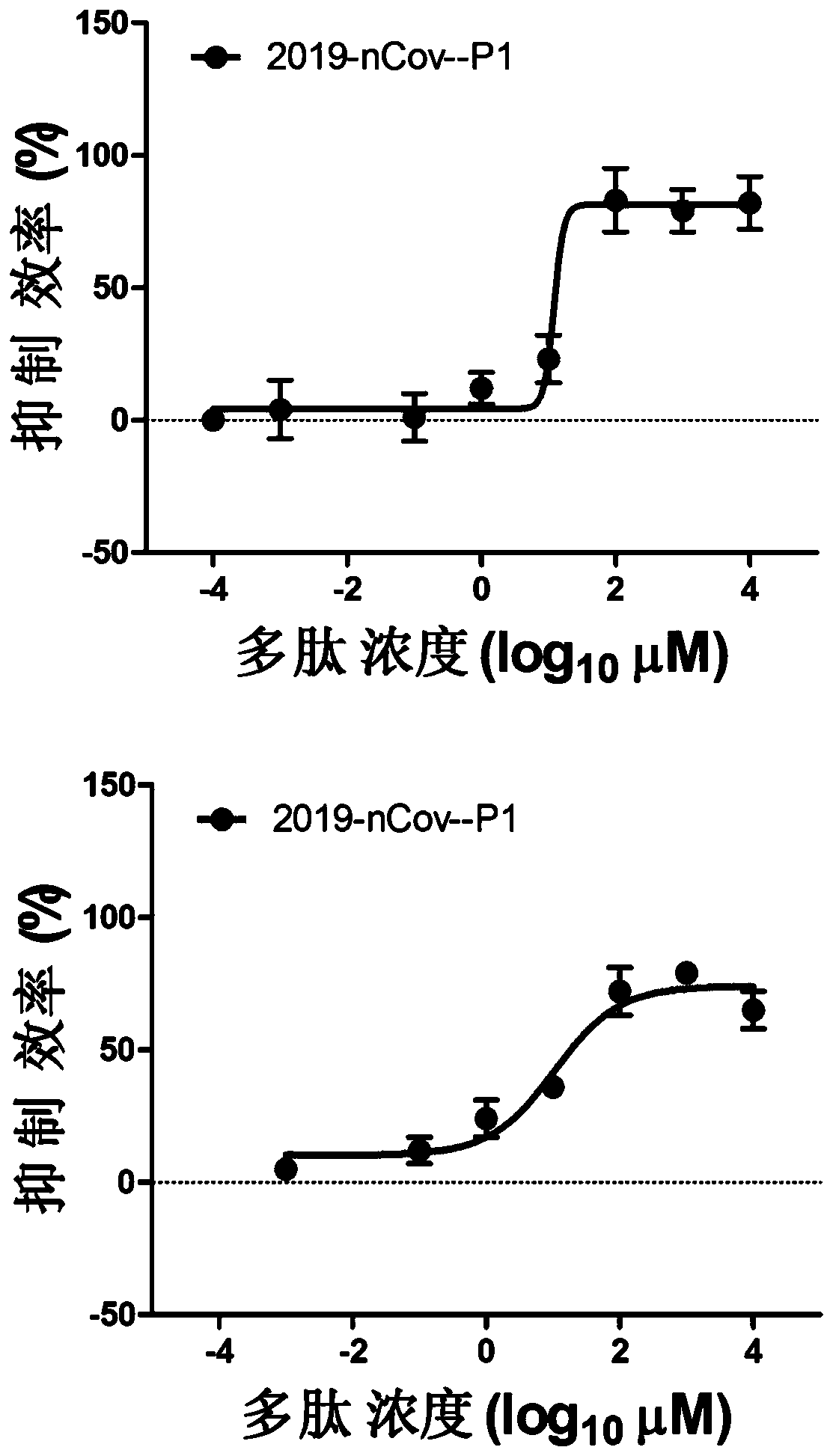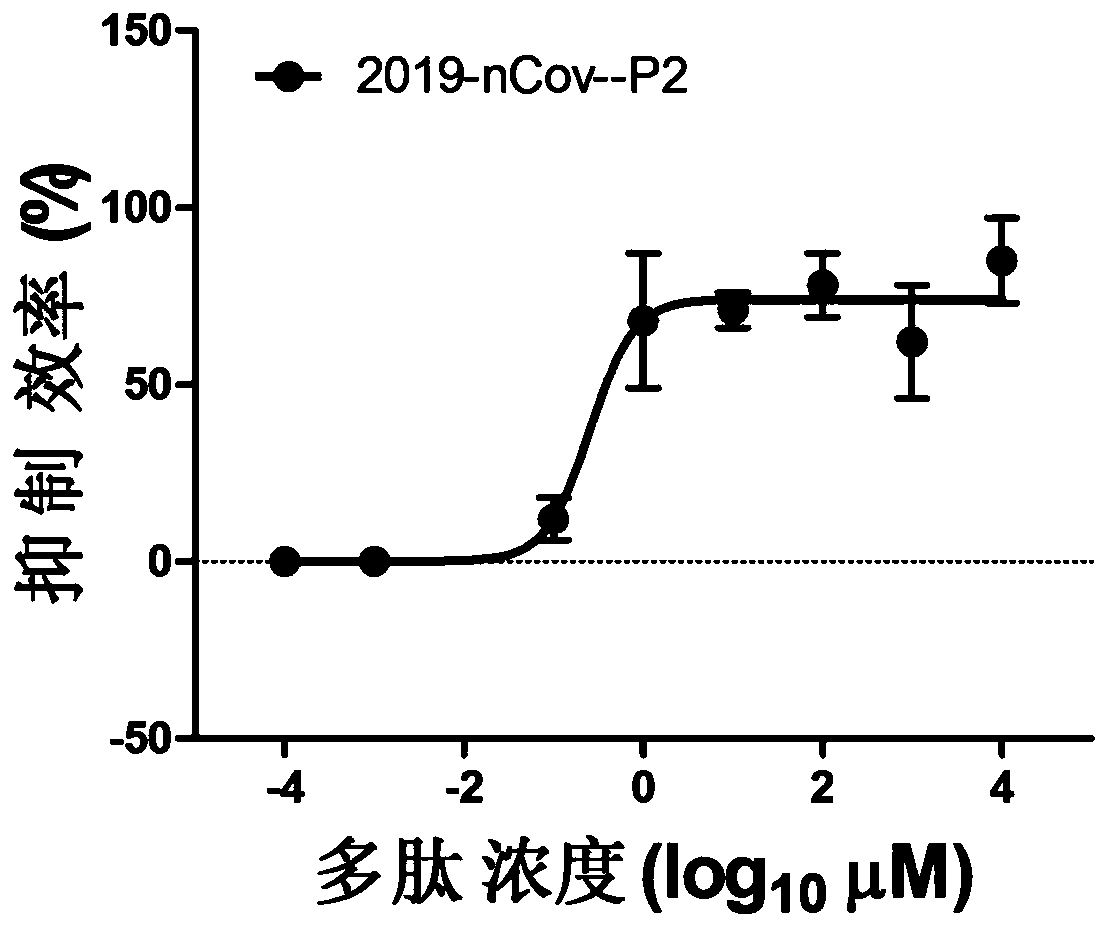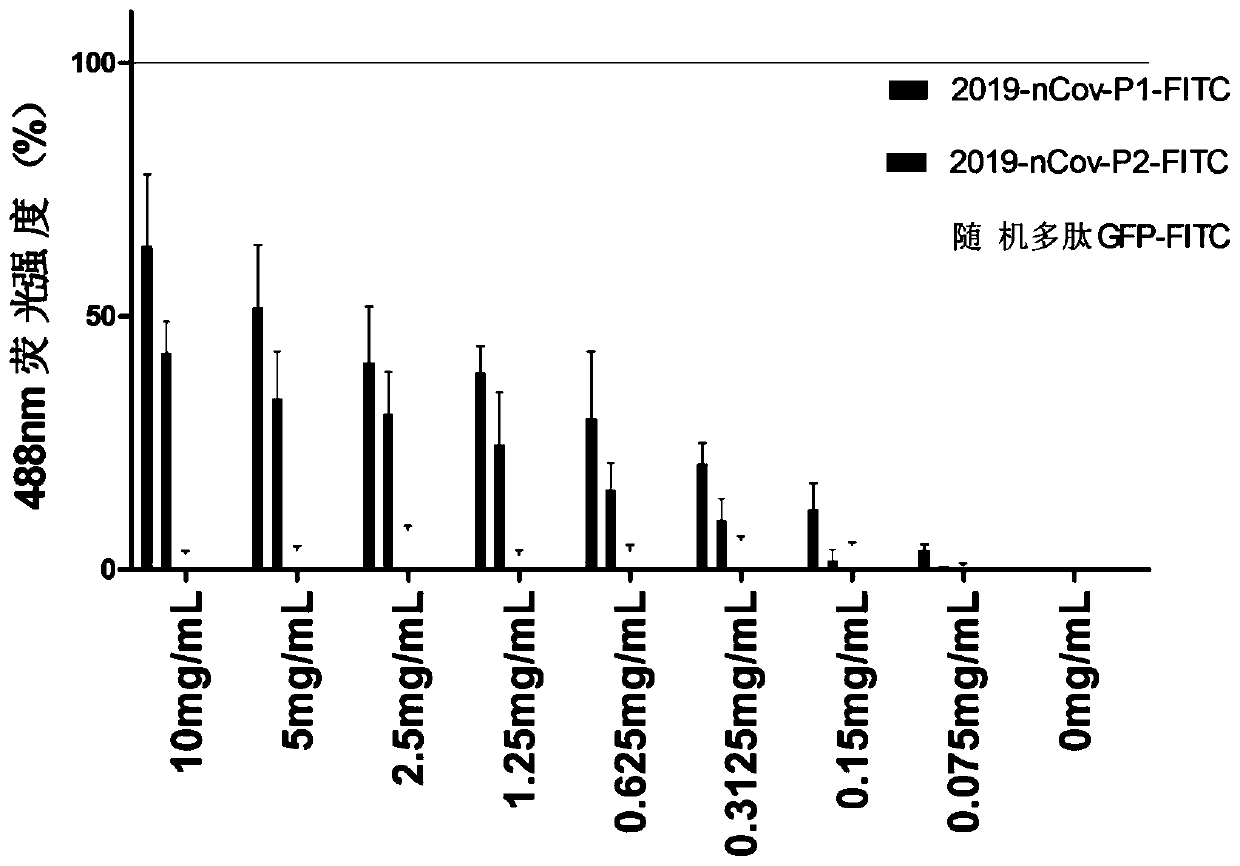Polypeptide capable of inhibiting novel coronavirus and application for polypeptide
A coronavirus, a new type of technology, applied in the direction of viral peptides, viruses, antiviral agents, etc., can solve problems such as difficulties in virus prevention and control, and there is no preventive vaccine, and achieve the effect of inhibiting and controlling infection
- Summary
- Abstract
- Description
- Claims
- Application Information
AI Technical Summary
Problems solved by technology
Method used
Image
Examples
Embodiment 1
[0038] In this example, Hun-7 cells and 293T cells were used to conduct an experiment on the inhibitory effect of the polypeptide 2019-nCov-P1 on the new coronavirus, which specifically included the following steps:
[0039] 1. Fake virus packaging
[0040] 1.1 Plasmid extraction
[0041] Pseudovirus system plasmid construction, the full-length 2019-nCov S protein was constructed into the PSV multiple cloning site, and the backbone plasmid pNL-LUR-E- was simultaneously transformed into DH5-a competent cells; 42 degrees Celsius, heat shock for 90 seconds Afterwards, spread the LB plate, the concentration of ampicillin is 5 micrograms per milliliter; cultivate overnight in a 37 degree incubator.
[0042] Pick a single colony and inoculate LB liquid medium with an ampicillin concentration of 5 micrograms per milliliter. Shake the bacteria overnight at 37°C.
[0043] Centrifuge at 12000 for 10 minutes, collect the bacteria, and extract the plasmid with Tiangen Plasmid Extractio...
Embodiment 2
[0062] The difference between this example and Example 1 is that the polypeptide 2019-nCov-P1 is replaced by the polypeptide 2019-nCov-P2.
[0063] The inhibitory efficiency of 2019-nCov-P2 on the new coronavirus is as follows: figure 2 shown.
Embodiment 3
[0065] Elisa detection of peptide binding to HR2
[0066] The HR2 polypeptide was coated onto a 96-well plate. The method is as follows, go to the polystyrene Elisa plate to equilibrate at room temperature. Dilute the HR2 polypeptide with the coating solution to a final concentration of 0.1 microgram per microliter. Coating liquid composition: 0.1696 g of anhydrous sodium carbonate, 0.2856 g of sodium bicarbonate, dissolved in 100 ml of deionized water, and added with a final concentration of 1% SDS. Add 100 microliters of protein dilution to each well. overnight at 4°C. Discard the coating solution, wash with PBST, add 300 microliters to each well, let it stand for 10 minutes, discard the washing solution, fill up the washing solution, repeat 5 times, and drain the washing solution. Washing liquid PBST: 8 grams of sodium chloride, 2.9 grams of disodium hydrogen phosphate 12 hydrate, 0.2 grams of potassium chloride, 0.24 grams of potassium dihydrogen phosphate, 0.5 millili...
PUM
 Login to View More
Login to View More Abstract
Description
Claims
Application Information
 Login to View More
Login to View More - R&D
- Intellectual Property
- Life Sciences
- Materials
- Tech Scout
- Unparalleled Data Quality
- Higher Quality Content
- 60% Fewer Hallucinations
Browse by: Latest US Patents, China's latest patents, Technical Efficacy Thesaurus, Application Domain, Technology Topic, Popular Technical Reports.
© 2025 PatSnap. All rights reserved.Legal|Privacy policy|Modern Slavery Act Transparency Statement|Sitemap|About US| Contact US: help@patsnap.com



